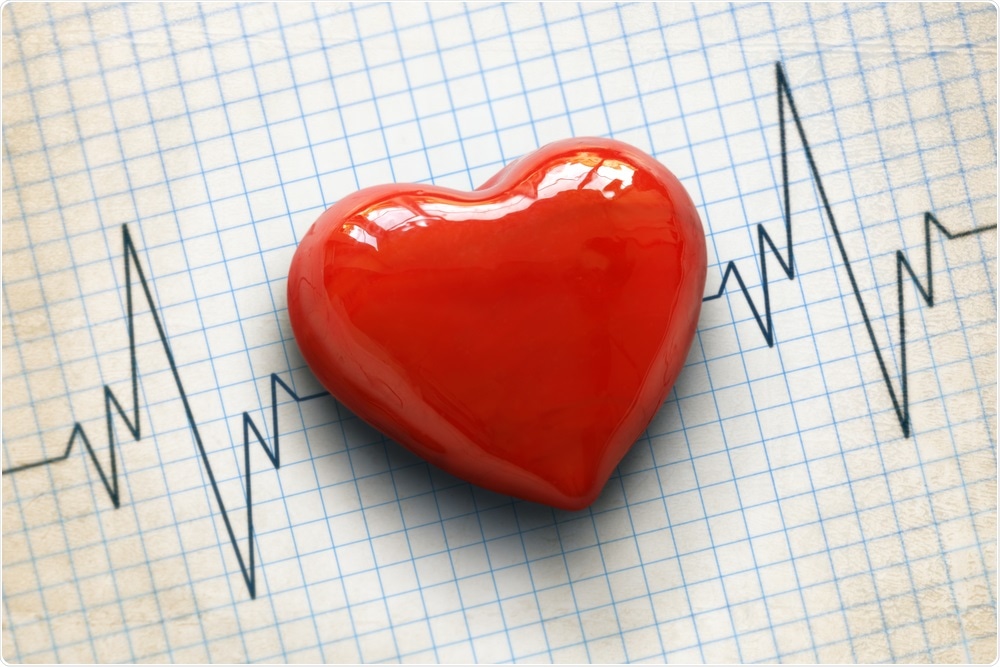I am a Professor of Clinical Cardiovascular Research at the Lund University in Sweden. We already know that a positive family history of cardiovascular disease is something important to ask patients about.
My interest in sibling number and rank in relation to cardiovascular disease (CVD) risk is linked to the broader concept of family history.
What did you find about the link between sibling number and rank, and cardiovascular events?
We found that the first-born child seems to have a somewhat lower risk for cardiovascular events than later-born siblings. This could be linked to both biological, social, and psychological factors of being the firstborn.
Such people have more attention from parents and are expected to do their best, often resulting in higher social positions and a better income. This translates into a healthier lifestyle and perhaps also stronger self-control according to the avoidance of smoking or alcohol abuse.

Siblings. Image Credit: Brocreative/Shutterstock.com
It is long recognized that family history is a significant factor in cardiovascular health. This research suggests that immediate and present family can also have an impact. What could this mean for how we view cardiovascular health?
Cardiovascular disease often runs in families, but the genetic influence is often just minor. Instead, environmental influences, shared environment, and sibling relations could shape the conditions for healthy or unhealthy behaviors early in life.
What other health issues did you look at and what did you find?
In fact, the first-born siblings had a slight but significantly increased total mortality risk as compared to second- or third-born siblings.
The reason for this is not clear but could be influenced by some occupational hazards if first-born siblings act as leaders in risky circumstances or suffer from mental health problems, outcomes that we have no data on which is why this is pure speculation. Further research is needed.
How could this concept of immediate family affecting the prevalence of disease relate to other areas of health?
Another link is the mother-child link in the Developmental Origins of Health and Disease (DOHaD) concept focusing on the early life influences of adult cardiometabolic risk. This mother-child link is not only a biological link but is also a social and psychological link that may be modified by factors such as the sex of the child, parity, or the health of the child. Siblings both collaborate and play with each other, but also compete for resources and the attention of the parents.
How could health policies and how they support families and children influence this data from country to country?
First of all, a deeper scientific understanding is a legitimate goal in itself, but family policies are at the core of the social policy program of every government.
One example is China, where a one-child strategy for families was upheld for a long time but now has shifted to a more liberal attitude to have more children. As selective abortion played a role, there is now a generation of young Chinese boys and young men that grow up in one-child families, and as more boys than girls survived, there will be a mate-finding problem in the future for many of these boys.
Growing up with siblings is common in most parts of the world and that creates an environment for language and motor development when younger siblings learn from their older brothers and sisters.
What limitations were there in the study?
We lack data on cardiovascular risk factors on the individual level (blood pressure, lipids, smoking) because national registers do not include this data from health screenings.
This data was based on men and women born from 1932 to 1960. Would you expect different results from later generations growing up and experiencing cardiovascular problems?
Yes, there are generational differences as a reflection of so-called birth cohort characteristics. People like me who were born in the 1950s have had mothers who attended preventive maternal health care, and we attended preventive child and school care, a fact that did not apply to our parental generation born in the 1920s.
In addition, family structure, norms, and economy have changed due to national policies to support families and offer extra subsidies for each newborn child. Such things may impact social roles among siblings, and this also concerns the role of schooling when modern children (siblings) spend relatively more time at school (away from their siblings) than in the past.

Cardiovascular Health Concept. Image Credit: Brian A Jackson/Shutterstock.com
What biological mechanisms do you propose could be behind your results, and how could genetic versus environmental factors come into play?
First-born siblings are at a higher risk during delivery because the mother has not given birth before. That can cause obstetric problems and health risks. However, if the firstborn survives he or she has young parents who can offer a lot of attention (and food) to the newborn child.
The sex ratio is a biological factor and is influenced by parity and maternal age. I cite from Wikipedia;
“In an extensive study, carried out around 2005, of sex ratio at birth in the United States from 1940 over 62 years, statistical evidence suggested the following:
- For mothers having their first baby, the total sex ratio at birth was 1.06 overall, with some years at 1.07.
- For mothers having babies after the first, this ratio consistently decreased with each additional baby from 1.07 towards 1.03.
- The age of the mother affected the ratio:
- the overall ratio was 1.05 for mothers aged 25 to 35 at the time of birth
- mothers who were below the age of 15 or above 40 had babies with a sex ratio ranging between 0.94 and 1.11, and a total sex ratio of 1.05”
What does it mean that your study was ‘observational’ and how could the results be applied appropriately and beneficially?
Large register-based studies like ours are, by nature, observational. This is like taking a photo and seeing lights and shadows, but maybe not everything. This is why causality cannot be proven. It may also have some limitations because it was carried out in the Swedish population that is rather wealthy and has been spared from war for over 200 years.
In addition, Swedish family policies are generous towards families and support for children. Thus the findings may be somewhat different in other populations living in relatively less affluent societies that apply different policies for families or schooling.
What is the next step for your research?
It would be interesting to use information from the Medical Birth Register (starting from 1973 in Sweden) in order to add information on early life factors. Another such register is the Military conscript testing register with data from a health examination and cognitive testing viewpoint in young men and more recently also young women.
We know that sibling relations last longer in life than the relations with our parents, so this should be studied further.
A special case of siblings is to be a twin. In Sweden, as in several other countries, we have a very sophisticated national Twin Register that could be used to study relations not only between twins themselves but also towards other siblings (non-twins) and whether that could impact cardiovascular risk or not. It is well-known that identical twins have a more similar risk profile than unrelated twins.
Where can readers find more information?
About Professor Peter M Nilsson
I involve myself in research on the epidemiology of cardiovascular risk linked to early life factors (DOHaD) but also to aging. Some people tend to be biologically older than their chronological age indicates and this also affects the arterial system, so-called Early Vascular Ageing (EVA) - a concept that I have developed with colleagues in Paris.
My next step is to look for models of high risk but no events, i.e. patients with a high cardiovascular risk factor burden but no or delayed cardiovascular events. Investigating these lucky “escapers” can hopefully bring us new insights about protective mechanisms - and new potential drug targets in the future. Could sibling rank be part of this protection?